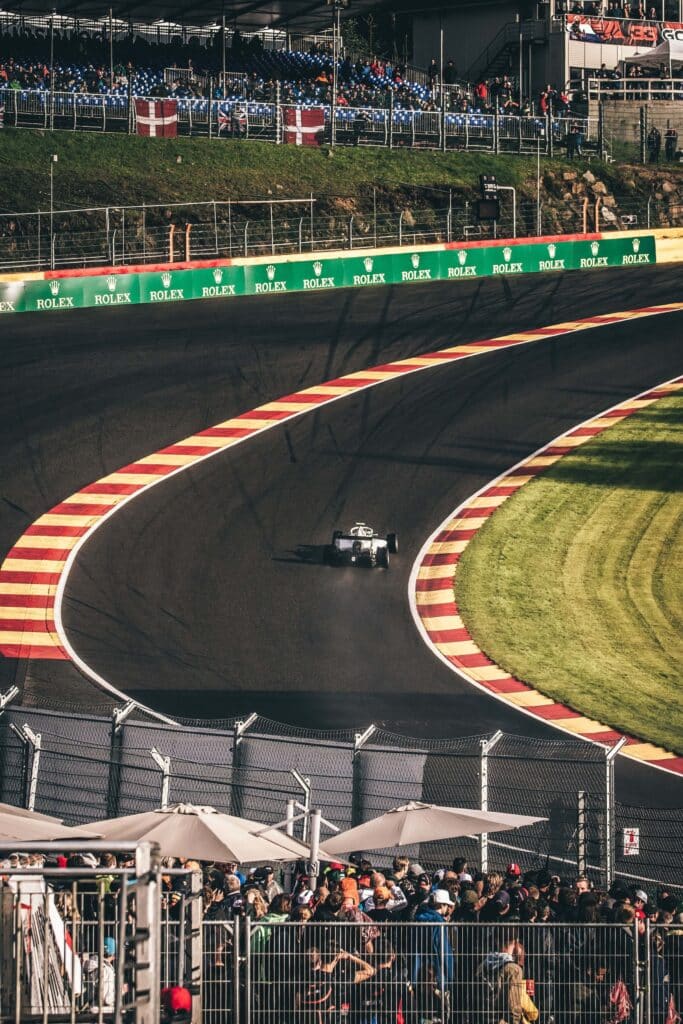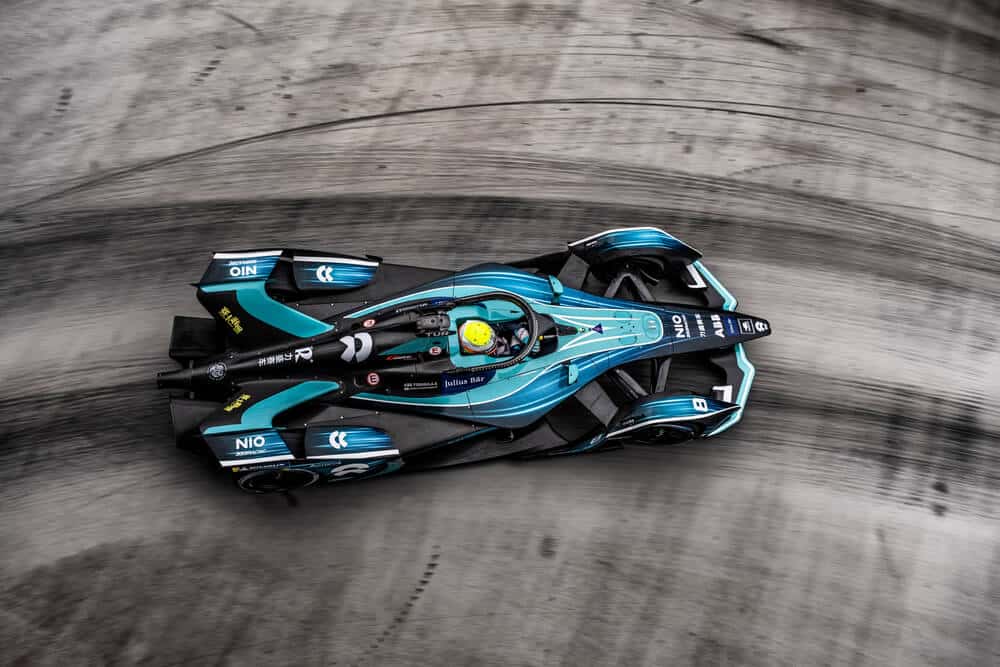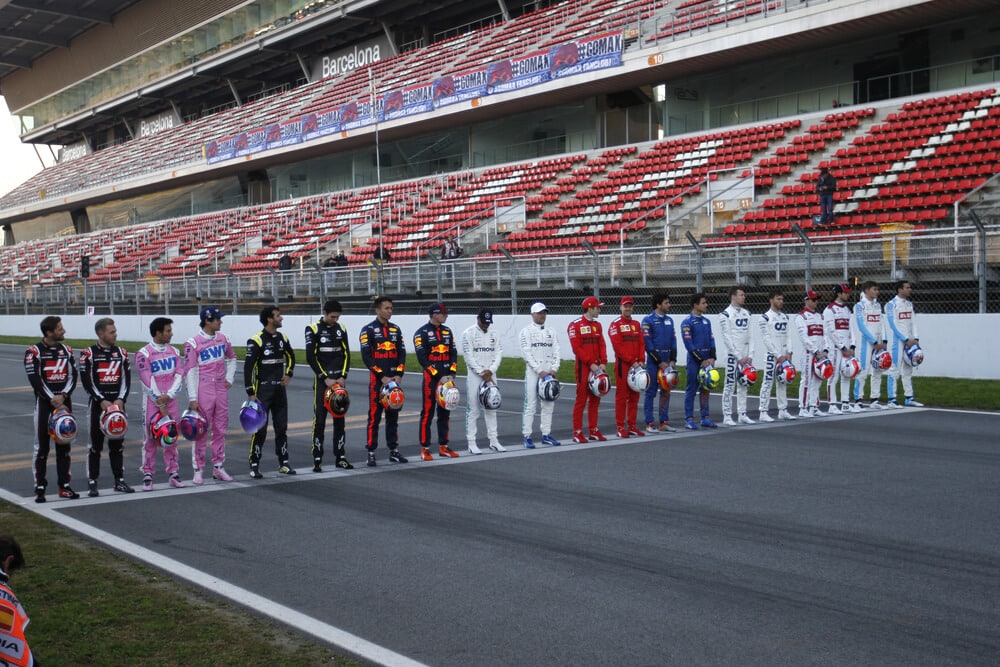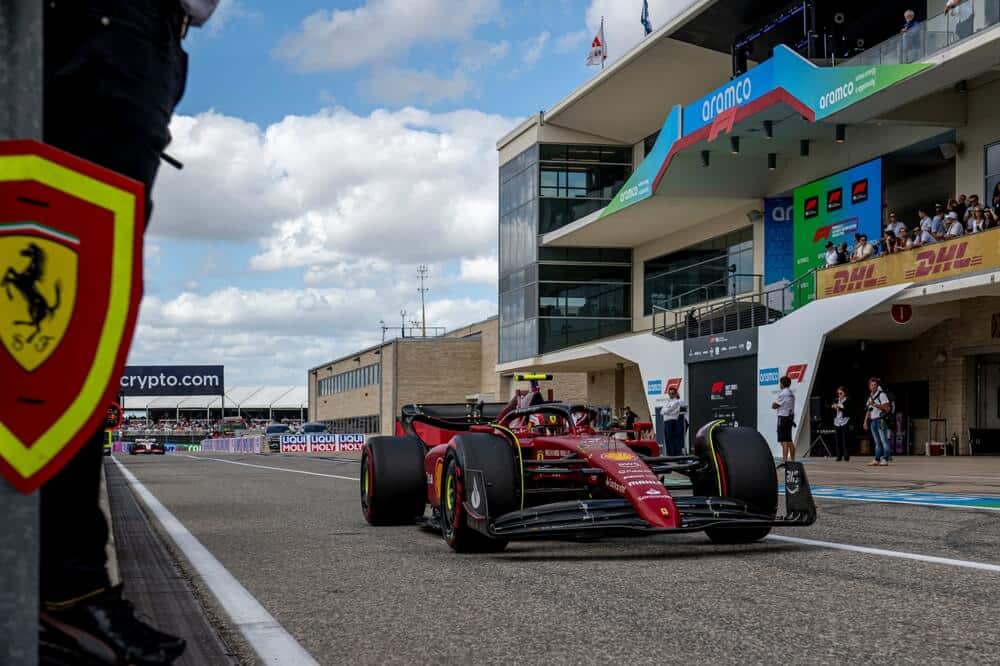F1 is all about speed. The faster the car the more chances to win the race. This is why engineers design parts and systems for an F1 car so that it can achieve as much speed as possible. Despite the constant inventions by engineers, there is a limit to the speed an F1 vehicle can achieve.
To ensure that the car remains firmly on the ground and has a good grip, F1 needs to apply more power to the ground. This means that the weight of an F1 car will increase exponentially hindering the speed of the car.
To combat this effect, engineers and F1 designers devised an idea to apply force on the ground through the air flowing around the car. This force is known as downforce.
In this article, we will be discussing downforce, different parts of F1 that generate downforce, and much more.
Table of Contents
Watch this video to undertsand how downforce works in Formula One.
What is Downforce in F1?
Downforce is a force created by air moving around an F1 car which pushes the car onto the ground. This helps the car to have a strong grip on the ground which in turn helps to have more speed.
Key takeaways
- Downforce is a type of upside-down lift force.
- It is generated by cutting and streamlining the air flowing around an F1 car.
- Downforce helps provide the necessary weight to the car, which provides the car with a firm grip on the ground.
- The downforce also helps the F1 car to achieve high speeds during cornering.
- There are many parts on an F1 that are specifically designed to generate downforce for the car.

Photo showing Formula 1 car at Spa Circuit 2021.
Understanding Downforce
In order to remain on the ground whilst racing at high speeds, F1 cars needs to have some added weight forced onto the ground. However, added weight means more difficulty in handling the car and a decreased speed. That’s where the application of downforce comes in handy.
Downforce is a type of lift force, but upside down. Engineers have added special parts to the body of an F1 car that creates a downward force from the air passing around it. This downward force provides the car with a firm grip on the ground, which is just as necessary as a high speed.
The secret of how much of the downforce an F1 car can create is unknown. It is usually kept as a secret between teams, as downforce can help achieve great speeds, especially when cornering. This helps the car in overtaking when on a long straight. For example, an F1 car at a speed of 240 kph can generate a downforce 2.5 times the acceleration due to gravity. It is said that theoretically, the speed and weight an F1 car achieves due to downforce, it can even drive upside down provided that it attains the speed required for it beforehand.
What is the difference between drag and downforce?
When a car is moving at high speeds, it faces resistance from the air. This resistance slows the car, reducing the top speed. This force of resistance is known as drag. Downforce is the name given to the lift force but in an upside-down direction.
Drag helps increase the speed of the car when taking corners or overtaking. Drag and downforce often come hand in hand. Drag isn’t always downforce, but downforce always means drag.
For many years F1 teams were confused between drag and downforce. They tried their best to design suitable parts that increased downforce and decreased the drag produced. However, in the Mexican Grand Prix, Ferrari seemed to have found the solution to this problem.
The front wing on the F1 Ferrari was more rigid and showed a greater amount of flexibility when it came to different elements that are on the wing section. During the race, Ferrari was able to reach a higher speed than Riccardo, even though the DRS for both cars was switched on.
It has been suspected that Ferrari may have found a way to devise downforce at low speed and reduce the drag at high speed. There is also the possibility that they may have found a loophole in the rules set for downforce by the FIA.
What will it take for an F1 car to be able to drive upside down?
Theoretically, an F1 car can drive upside down due to the downforce that the car is able to generate. However, this has not been possible due to a number of reasons.
The first and foremost among these reasons is the supply of fuel to the engine and ensuring that it remains lubricated. An upside-down F1 car could have all of its fuel accumulate on one side of the tank which could make the engine run dry.
One of the main problems behind an F1 car not being able to drive upside down is the possibility of the driver getting disoriented whilst driving upended. He could have his blood rush from his brain making him incapable of driving.
Just like all problems have solutions, these too have possible solutions that could be implemented making the F1 finally drive upside down. A few alterations and adjustments to the oil supply system can make the fuel go directly to the parts that need the most lubrication. This will prevent the engine from running dry.
To combat the problems that could be faced by the driver, the tunnel on which he would drive the car should not be too high. Plus, the top of the cockpit should be cushioned for any unforeseen crashes. With just a few practices, the driver should be able to drive upside down just like an air pilot somersaulting his plane in the air.
How is a modern F1 car different from an 80’s F1 car in terms of generating downforce?
F1 engineers came up with the idea of applying aerodynamics which includes the application of downforce back in the 1970s. However, it was banned in the 1980s because the FIA felt that the ever-increasing speed that the downforce provides while cornering is very dangerous.
Downforce could disrupt the ground effect, which is the lift that the wings of the car produce when in close proximity to the ground. The ground effect generates downforce by sucking air beneath the underside of the F1 car.
In today’s modern F1, downforce is generated using other methods rather than the ground effect. Back then, the front wing’s function was to enhance the production of downforce. Nowadays, they are used to control the flow of air around the car so that the production of downforce could be maximized and the aerodynamics around the car remains optimum.
With the change in time, the tires of the F1 have gotten thicker. This in turn made the endplates of the front wing to be more curved at the end so that they could kick the air surrounding the tires.
New F1 wings are sharply pointed with sleek edges to control the turbulence around the car. The wings generate turbulence from the air which is directed by the cascades underneath the car. This creates a suction that pulls the car to the ground allowing it to have a firm grip, also known as the ground effect.
Theoretically, an F1 car can drive upside down due to the downforce that the car is able to generate.
Frequently asked questions about Downforce
Could an F1 car drive upside down?
How much downforce does an F1 car produce?
What is aerodynamics in an F1 car?
How much downforce does a modern F1 car generate?
Which F1 car produced the most amount of downforce?
Car parts that generate downforce
Over the years, engineers and F1 designers have mastered the art of creating car parts that generate the most amount of downforce. The most amount of downforce is generated by the front wings, splitters, canards, and vortexes. The rest is done by other car parts on the F1.
Front and rear wings
Front wings are among the first parts of the car that impede the flow of air around the F1. They help in producing the most amount of downforce along with streamlining the sweep of air around the car body. Front wings have curved surfaces that help in directing the air toward the underside of the car. This helps generate downforce, minimize drag, and keep the engine cool.
The rear wing of an F1 car is just as important as the front wing. They have the same function as a front wing. However, the angles to which the aerofoil of a rear wing is placed can be changed and adjusted according to the track and driving conditions.
Splitters, canards, and vortex
Splitters are placed on the underside of the car. They ensure that little air passes through the space between the car and the ground. They direct the air towards the sides of the car and the underbody. This reduces the drag and generates downforce.
Canards and Vortexes are miniature plates placed on the front of the car. They are positioned at a certain angle to generate a small amount of downforce. However, if canards and vortexes are not placed at a correct angle, they can hamper the function of other aerodynamic parts of the car or the rear wings.
Side skirts, side ducts, and vortex generators
Side skirts help in reducing the pressure of the air from the sides of the car. If air enters the underside of the car it can destroy the downforce which has been created by the splitters and other parts of the car. The side ducts help flow the air through the sides of the car. This helps the engine to cool down.
The side ducts also ensure that the air does not interact with the turbulent flow generated by the side skirts and canards. This helps in increasing the speed of the car and minimizing the drag.
Spoilers, bargeboard, and diffusers
The spoiler impedes the smooth flow of air around the car, minimizing the lift force. A spoiler placed at the rear end of the car can even help produce some downforce of its own.
The bargeboard’s main function is to force the air around the car so it can be used by the rear wing.
Diffusers help in decreasing the pressure underneath the car. This helps in increasing the speed of the car and enables other parts of the car to generate more downforce.
Conclusion
Formula One cars are a product of carefully engineered parts and devices that help them to achieve the highest possible speed. Engineers apply laws of physics, aerodynamics, and much more to make the best possible F1 car, functioning at high speeds, for tier teams.
One such example of the critically engineered parts of the F1 is the devices that generate downforce. A force that is crucial for the car to stay on the ground at high speeds. However, F1 teams are still looking for ways to improve the generation of downforce and the F1 in general so that it can achieve speeds and stunts that it was incapable of achieving in the past.
Article sources
- https://www.mclaren.com/racing/f1-playbook/downforce/#:~:text=Downforce%20is%20a%20measure%20of,the%20ceiling%20of%20a%20tunnel.
- https://courses.ansys.com/index.php/courses/aerodynamics-discovery-day/lessons/explore-lift-through-simulations-lesson-3/topic/downforce-on-an-f1-car-rear-wing/
- https://www.formula1-dictionary.net/downforce.html
- https://www.cmcmotorsports.com/blogs/the-drift/downforce-in-f1-the-king-of-formula-1-physics
- https://f1chronicle.com/how-do-formula-1-cars-generate-downforce-f1-tech/
- https://www.grandprix247.com/2018/11/08/have-ferrari-solved-the-drag-vs-downforce-dilemma/
- https://thegsaljournal.com/2020/06/28/aerodynamics-in-formula-1/
- https://geniuserc.com/basics-of-car-aerodynamics-drag-and-downforce/
Learn more about Formula One
Want to learn more about F1? Then visit our Formula 1 glossary and dictionary.




